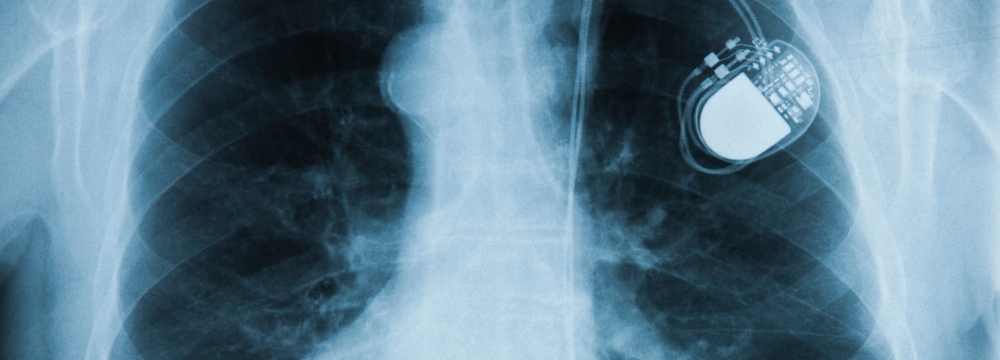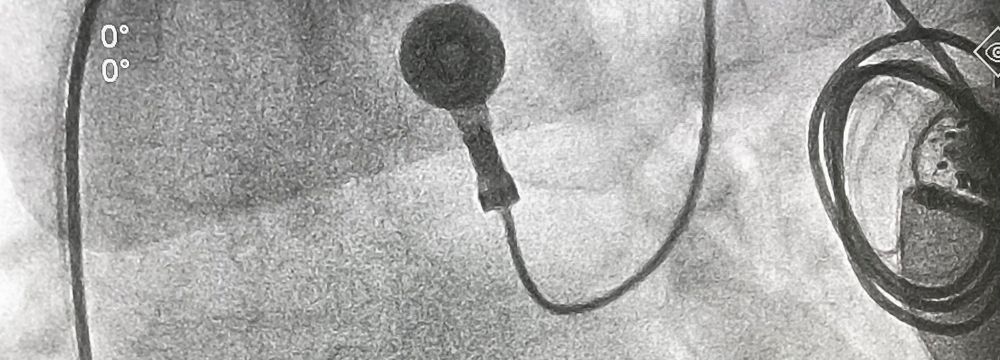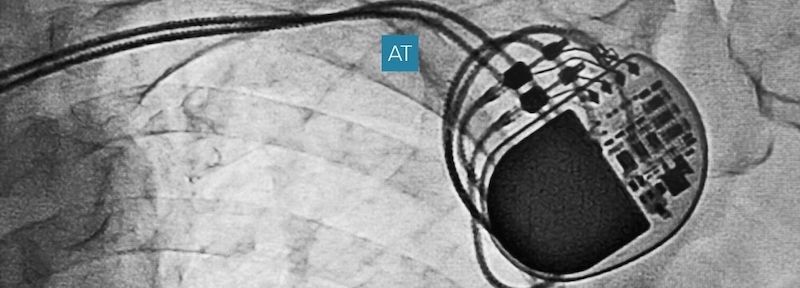Pacemaker
For decades, traditional pacemakers have been the gold standard in heart-pacing for bradycardia, also known as a slow heartbeat. This involves placing a small battery, known as a pulse generator, under a flap of skin in the chest muscle and connecting it to the heart with physical wires or leads. These pacemakers are very effective, but as with many things in the field of cardiology and electrophysiology, there is room for improvement. In our field especially, there is a significant technological and clinical push behind innovations and improvement of devices and techniques.
The result has been newer technology in the form of wireless or leadless pacemakers. These pacemakers are fully self-contained and attached to the heart’s ventricle, meaning they do not need wires to deliver their electrical impulses.
Does One Work Better Than the Other?
Before we delve into the particulars of each device, it’s worth noting that pacing technology, in both its traditional and leadless forms, is very safe, effective, and long-lasting. Let’s take each central concern and compare these two technologies.
Battery Power
Both traditional and leadless pacemaker technology rely on batteries to make them portable. In both cases, the batteries can last upwards of 10 to 12 years, which may vary based on how often the pacemaker is needed. However, both technologies offer similar battery life.
Malfunction and Wire Breakage
This is an area in which the leadless pacemaker excels. Traditional pacemakers are prone to wire breakage, which can result in a lead extraction procedure and replacing the wires. Beyond the inconvenience of not having that pacemaker fully functional, patients must undergo a second procedure to correct the problem. Leadless pacemakers do not have this issue, but a highly skilled electrophysiologist must place leadless pacemakers appropriately, as proper affixation to the heart muscle is critical to the effectiveness and safety of the device.
The Procedure
Traditional pacemakers are implanted in a straightforward process that requires minimal invasiveness. Patients are usually in and out of the cath or EP lab within a couple of hours, and the anesthesia needed is relatively minimal. On the other hand, placing a leadless pacemaker requires a more significant procedure in the EP lab, and the device is placed in the ventricle using advanced catheter technology.
Dual Chamber Pacing
One of the advantages that a leadless peacemaker cannot match (yet) is the ability for dual chamber pacing. Current leadless technology does not allow for this, and a patient that requires it will have to opt for a traditional pacemaker. However, a new device is currently in trials and shows promise in filling this gap.
Device Replacement
Replacing the pulse generator in a traditional pacemaker is very straightforward and involves removing and replacing the old one in a one-for-one swap. Based on the ten years of the expected life of the typical pacemaker, any traditional pacemaker implanted today will probably be replaced with a smaller, less invasive, and more technologically advanced option when the battery runs out. On the other hand, a leadless pacemaker requires another catheter procedure that can be more involved than replacing a traditional pacemaker battery. A second, self-contained pacemaker is attached to the ventricle during this second catheter procedure. The first pacemaker will be deactivated and left in the heart if it is well planted.
Connectivity
Modern pacemaker technology has improved dramatically, especially regarding sending data back to your cardiologist or electrophysiologist. Traditional and leadless pacemakers use Bluetooth technology to communicate with a base station that ultimately relays your heart rhythm and device activity back to the office. This data can then be interpreted to guide any adjustments now and in the future.
The Bottom Line
Most patients can choose between a traditional or leadless pacemaker depending on their insurance plan, condition, and out-of-pocket expenses. Patients requiring a dual chamber pacemaker are currently limited to traditional pacing but will likely have the option for a leadless version soon. Most important, however, is to get a proper diagnosis and overview of treatment options by visiting a qualified electrophysiologist like Dr. Tordini; you can do that and understand the best way forward by requesting a consultation.
Related Topics:
- Exciting Leadless Pacemaker Technology on the Horizon
- Will I Have to Replace My Pacemaker?
- Could Your Chronic Fatigue Be a Result of a Cardiac Arrhythmia?
- Lead Extraction
Dr. Tordini is a part of Florida Medical Clinic Orlando Health




